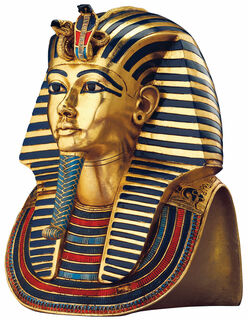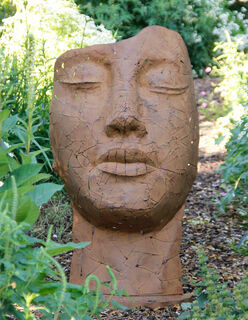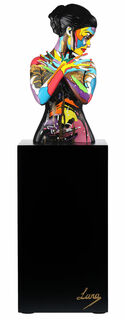Buy Busts Online
The bust of Nefertiti, the mask of Tutankhamun, Frederick the Great, Leonardo da Vinci, Albert Einstein, or Johann Wolfgang von Goethe - in the ars mundi online shop you can buy these and many other representations of famous figures of contemporary history. You will find busts of important characters from ancient times to icons of the 20th century. There are also modern and impressive interpretations of the bust by contemporary artists such as Markus Lüpertz, Bruno Bruni or Roman Strobl.
Art history defines a bust as the sculptural representation of a human being or a figure, either as a half-figure or from the top of the head to the shoulders. The realisation can take the form of a full sculpture as well as a relief. Busts can be worked from several different materials, such as marble, wood, stone, or metal, and they can depict both sacred and secular representations.
The origin of the bust dates back to ancient times. Especially in Roman art, plastic portraits were very popular and widespread. The art form of the bust developed, among other things, from the Etruscan tradition of creating human-shaped urns and from the religious custom of placing ancestral images in homes. Busts were meant to enhance a person's reputation, honour them, and depict their nature and character. Roman emperors predominantly immortalised themselves in busts as objects of prestige. These were usually erected in streets and public places but were also found in houses or burial chambers.
In contrast, Greek art did not know busts as a form of representation, and even in Egyptian art, they can only be found very rarely. The fact that numerous busts from these cultures are still known and have survived can be explained by the fact that the artefacts found are fragments of sculptures or copies made in later times from the upper half of an image of the entire body. For instance, the famous bust of Pericles is actually a Roman partial copy of a full Greek figure.
Since their inception, busts have been part of the culture of remembrance. They have survived in art as an independent form of representation that is constantly being further developed.






























